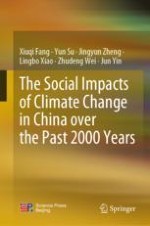2024 | OriginalPaper | Chapter
9. The Social-Ecological Resilience and the Coordination of Historical Climate and Social and Economic Changes in China
Authors : Xiuqi Fang, Yun Su, Lingbo Xiao, Jingyun Zheng, Xudong Chen
Published in: The Social Impacts of Climate Change in China over the Past 2000 Years
Publisher: Springer Nature Singapore
Activate our intelligent search to find suitable subject content or patents.
Select sections of text to find matching patents with Artificial Intelligence. powered by
Select sections of text to find additional relevant content using AI-assisted search. powered by
